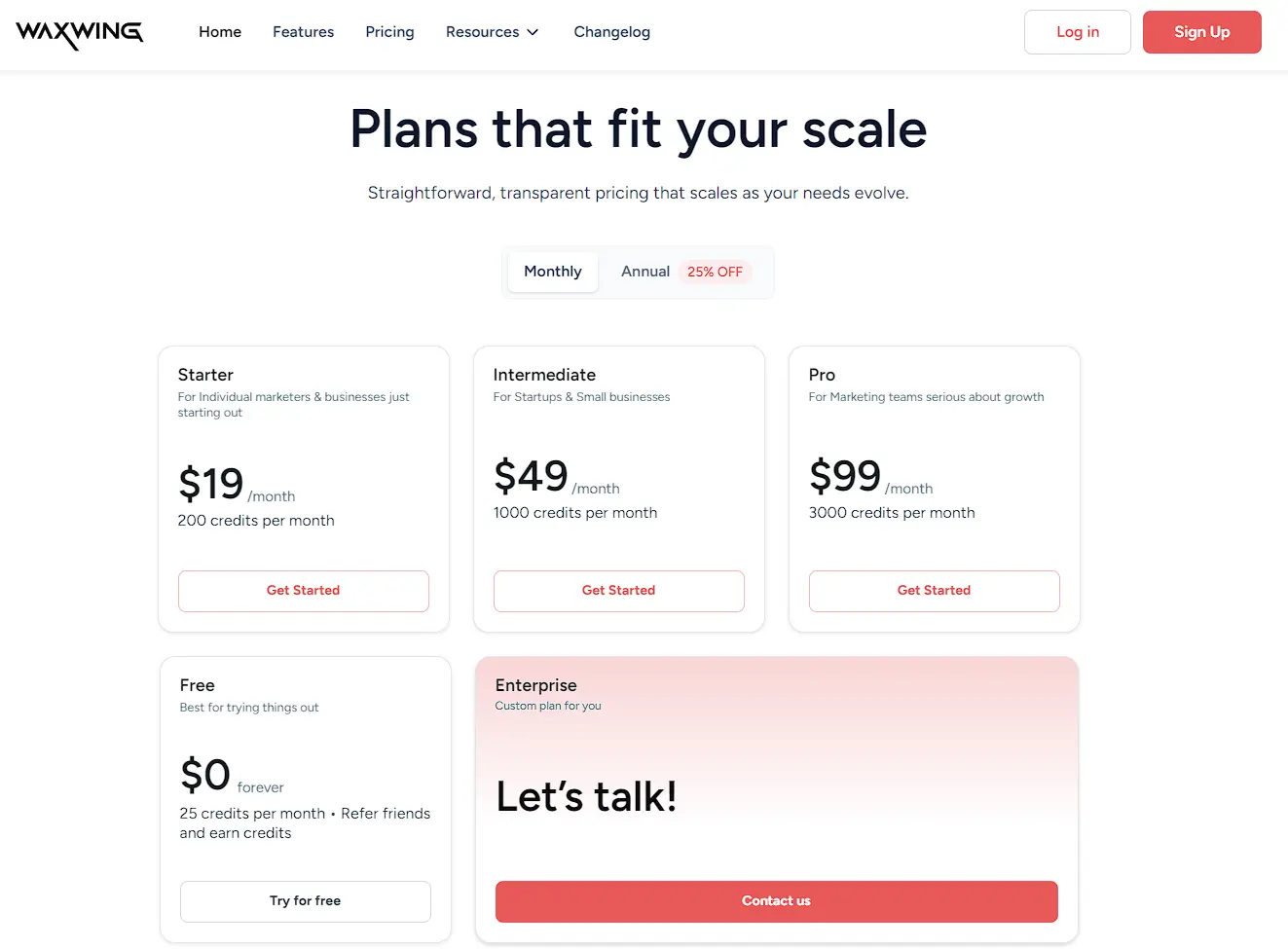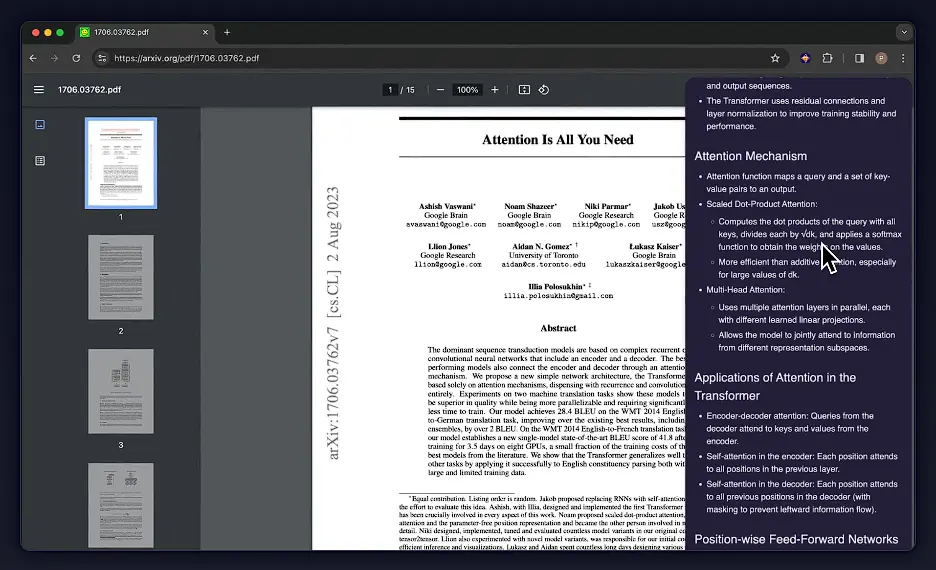One of the best parts of the software business is the part where you have no marginal costs. AI makes that advantage worse. Now, every user interaction costs money.
That also puts into question one of the pillars of SaaS growth: Freemium. Can startups continue to offer generous free plans when each interaction costs them money?
It's be easy to pontificate, but it's more conclusive to look at what startups actually do.
That's why I reviewed 25 of the most popular launches on Product Hunt from the last three months (excluding early apps that have no pricing plan in place, and a few launches like design inspiration resources that weren’t SaaS products).
Interestingly, that hasn’t affected the freemium model’s popularity as a customer acquisition strategy.
Freemium is the norm for AI products
Most of the products I looked at (click through to view my spreadsheet) lead with AI in their positioning, and charge for AI usage, AI-specific features, or access to powerful models. The majority of these also offer free plans, or free trials.

Waxwing offers a free plan with AI features included alongside paid plans for additional credits
There’s a lot we can learn from that to inform GTM motions for future SaaS products.
What’s all the fuss about freemium?
The freemium pricing model — in which you offer some of your product’s features for free, while users have to pay to access the rest — continues to be a powerful customer acquisition strategy in PLG SaaS.
It can help reduce CAC (by as much as 50%, according to Paddle’s 2020 research), and boost your conversion rate. And if yours is an early stage product, you stand to gain from user feedback and from building brand awareness by offering freemium plans. It’s how Trello landed 500,000 sign-ups within its first year alone.
Going freemium isn’t for everyone. Your product’s characteristics and your customers’ buying cycle will largely determine if it makes sense to offer certain features for free — particularly when you’re offering AI-driven functionality as part of the package.
Freemium is going to cost your AI SaaS
When you build or update a freemium SaaS product with AI features, you’re faced with additional AI compute costs, as well as customer support for non-paying users.
There’s no getting around this: if you’re selling a SaaS with AI under the hood, you’ve gotta give everyone a taste. The majority of recently launched apps I looked at offered limited AI features, a limited number of AI responses, or a slower language model driving AI functionality.
That’s different from a few years ago, when SaaS was primarily charging for additional capacity — the number of seats included in your plan, how many documents or projects you could create, how much storage you could access — or collaboration capabilities.
That said, AI model access may not cost you all that much. According to Paul Richards, CEO and co-founder of note-taking assistant Recall, “the costs of LLMs are getting less and less expensive, so being able to provide free (AI-generated) summaries is really not that much of an expense, especially when we look at our signup-to-paying conversion.”
Mature products like Canva and Notion can comfortably afford to offer AI features for free as part of their CAC. What’s worth noting is that this is now standard across even emerging products.

Notion lets you tack on AI functionality to your pricing plan
Do I absolutely have to go freemium?
It’s critical to work out whether a freemium plan makes good business sense for your SaaS.Yes, freemium might lead to more people signing up. But what will your conversion rate look like? And is this the best strategy to attract paying customers in your niche? How might it stack up against a free trial?
Freemium conversion rates are typically between 6-10% for companies that serve small businesses, and between 3-5% for those serving medium-sized businesses, according to Databox’s study from 2019. Looking at more recent figures for an example, OpenAI’s ChatGPT saw a freemium conversion rate of about 5% in the US.
Meanwhile, free trials can drive significantly higher conversion rates —SEO agency First Page Sage reported trial-to-paid conversions of 86 of its clients averaging more than 20% across various industries.
Naturally, that doesn’t illustrate whether the base figures of sign-ups were significantly lower than if these companies implemented a freemium model — but that figure suggests it’s worth considering this approach before going all in on freemium.
There’s also the option of ditching free plans altogether. Command AI and Equals removed their free tiers with a view to boost trial conversion rates — and it worked.
How to convert customers with a freemium model in the age of AI
For AI-driven SaaS products, it’s crucial that your customers understand both the effort and reward involved in using your AI-driven SaaS. They have to be able to see how your product transforms their inputs into the results and outcomes they need, before they pay a pretty penny for what you’ve built.
As such, it makes sense to follow the current trend of offering as much AI functionality as you can afford to within your free tier, along with in-app templates and examples that let your users kick the tires right away.
The goal here is to enable your audience to experience an a-ha moment with your AI features before they invest more deeply into your product.

Recall lets you get insights from PDFs and videos quickly using its browser extension
Next, you’ll want to invest time and effort in figuring out your pricing. There are several new ways to craft pricing plans for AI SaaS, including success-based pricing, usage-based pricing, usage-subscription hybrids — and keeping it darn simple.
There’s plenty of guidance on pricing your SaaS that’s beyond the scope of this piece, so I’ll point you to our recommended reading on the topic at the end of the article.
Your plans may also evolve along with your product. For example, Recall currently offers a single paid tier for its content summarizing app. But CEO Paul Richards said that could change further down the road:
“For now, the simple pricing model is working well for us. We do plan to launch a premium experience that will be relatively costly — this may be where we play around with usage based pricing plans.”
Whether you choose to go the freemium route, opt for free or reverse trials, or simply skip those altogether, avoid needless complexity in your pricing that doesn’t align with how your customers value your product.
Let them simply use it, measure the value they derive from it, and decide for themselves that your SaaS is worth paying for.

















